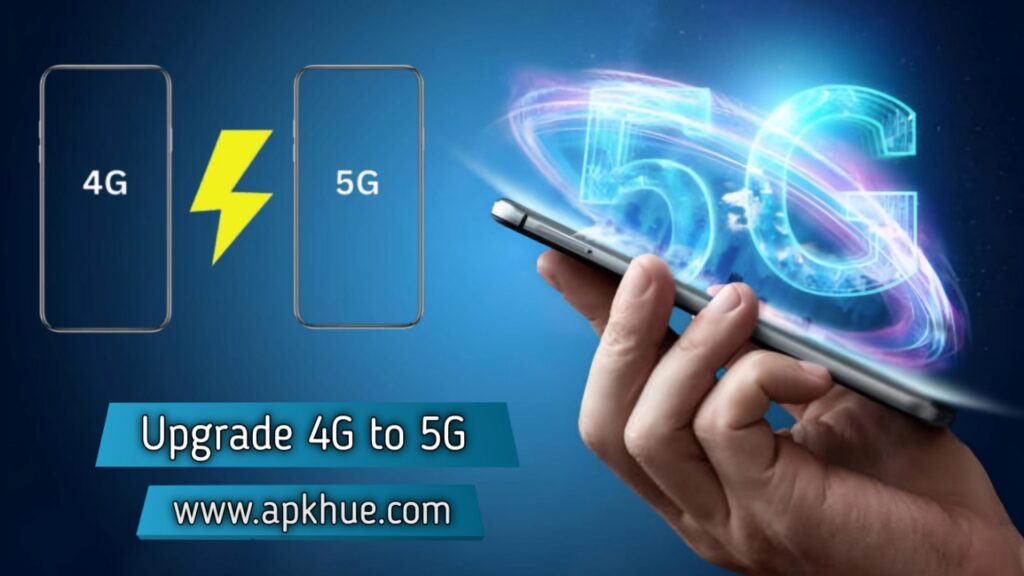As the globe adopts 5G technology, many users are eager to update their 4G devices so that they may benefit from the 5G network’s speed and efficiency. This transition is about more than simply faster internet; it is also about enabling more innovative apps and services. However, moving from 4G to 5G is not as straightforward as turning on a switch. This article describes the procedures and considerations you should take to ensure a seamless transition.

Understanding the Difference: 4G vs 5G
Before getting into the conversion process, it’s critical to understand what sets 4G apart from 5G. The fifth generation of mobile networks, 5G, provides much higher data rates, reduced latency, and more capacity than its predecessor, 4G. This means faster download speeds, better streaming, and more dependable connections, especially in heavily crowded regions.
5G also supports a greater variety of frequencies, including the high-frequency millimeter-wave band, allowing for quicker data transfers. However, these high frequencies have shorter ranges and are more sensitive to obstructions, needing a larger network of antennas and base stations.
Check Device Compatibility
The first step in upgrading to 5G is to ensure that your mobile device is 5G ready. Not all smartphones are 5G compatible, particularly older versions meant for 4G networks. To see if your phone supports 5G, you can:
1. Consult the Manufacturer’s Website: Look for your phone model on the manufacturer’s website. They commonly provide network compatibility in the specs section.
2. Check Phone Settings: Some phones list network capabilities in the settings menu. Look for “Network & Internet” and then “Mobile Network” to discover whether 5G is available.
3. Contact Your Carrier: If you are unsure, contact your mobile provider to see if your device supports 5G.
If your phone is not 5G compatible, you will need to switch to a new smartphone that supports the technology.
Update Your SIM Card
Once you have a 5G-compatible smartphone, make sure your SIM card supports 5G. Some older SIM cards may not operate with 5G networks, so you may need to get a new one. Here’s how to continue:
1. Check with Your Carrier: Contact your mobile provider to see if your current SIM card is 5G compatible. Most providers can verify this using your SIM card number.
2. Request a New SIM Card: If your existing SIM card does not support 5G, seek a replacement from your carrier. This is usually a simple process that involves visiting a store or having one shipped to you.
3 Install the SIM Card: Once you’ve received your new SIM card, follow your carrier’s instructions to put it in your smartphone.
Select the Right Plan
Having a 5G gadget and SIM card isn’t enough; you also need a 5G-compatible mobile contract. Here is what to do:
1. Review Your Current Plan: Check to see whether your existing plan includes 5G connectivity. Some carriers will automatically upgrade their plans to incorporate 5G, while others may need you to subscribe to a different plan.
2. Upgrade If Necessary: If your plan does not include 5G, contact your carrier to upgrade. Make careful to enquire about data limitations, speeds, and coverage zones, as these might differ per package.
3. Consider Your Usage: If you use a lot of data or rely on your mobile connection for business, you might think about getting an unlimited or high-data-cap plan.
Test Your 5G Connection
After you’ve set up your phone, you should test your 5G connection to make sure it’s working properly:
1. Check the Network Indicator: Your phone should show a “5G” or equivalent indicator in the status bar, indicating that it is linked to a 5G network.
2. Run a Speed Test: Use tools like Ookla’s Speedtest to test your connection speed. This might help you validate if you’re receiving 5G speeds.
3. Test in Different Locations: 5G coverage varies greatly depending on your region. Test your connection in several locations to get a feel of the network’s performance.
Conclusion
Upgrading from 4G to 5G might result in faster internet speeds, lower latency, and a more stable connection if you take the proper procedures. You may smoothly move to the next generation of mobile technology by confirming that your device, SIM card, and cell plan are all 5G-compatible and properly configuring your settings. With the proper preparation, you’ll be able to reap the full benefits of 5G technology.
